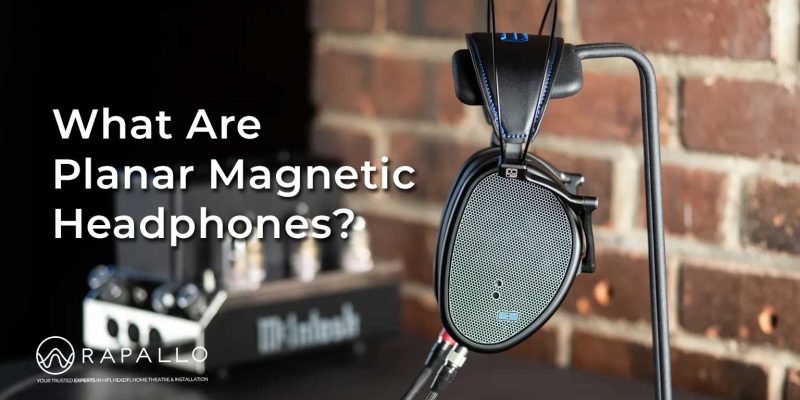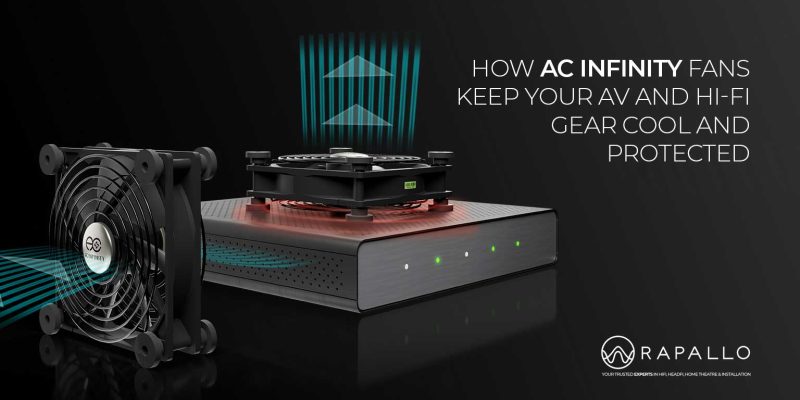
Does my audio system need to be balanced to be any good?
Estimated reading time: 8 minutes
So, does my audio system need to be balanced to be any good?
A few weeks ago we received a request from a customer who had balanced audio on his wish list. If you read much promotional literature for high-quality equipment, you’ll notice the phrase “balanced connection” tossed around. Balanced inputs and outputs are sort of a must for audio equipment that has any claim to quality. The word itself has promotional value, suggesting superiority over the long-established “unbalanced” connection.
But there are a lot of questions, and often confusion, surrounding balanced and unbalanced audio – What is balanced audio? Is balanced better than unbalanced? Why should I use balanced? How will balanced audio affect my system? What differences in sound quality can I expect to hear when using balanced? If balanced is so good, why isn’t everyone using it? …and the list goes on.
What follows is some insight into balanced vs. unbalanced audio in an attempt to answer these questions.
The cables used in an audio system can have a major impact on the sound of the system. Key to understanding this debate is the fact that every cable in an audio system has the potential to add noise and to compromise the sound quality of the components it connects. That means it’s important to use the right cable for the right job, which in turn means you need to have an understanding of the kind of signals the cables are carrying.
Apart from the signal level (which we’ll ignore here), it’s important to consider whether the signals are balanced or unbalanced. Hum…?! Let us explain…
Unbalanced Cables and Signals
Unbalanced audio is what you will be most familiar with.
An unbalanced cable consists of two connectors connected by two wires inside the cable—a signal wire and a ground wire. You can quickly (in most cases) identify a cable designed to carry an unbalanced signal by its connectors: because each wire has to terminate at the connector with its own contact point, an unbalanced cable requires only two conductors at the connector.
Inside the cable itself, the signal wire is typically in the center of the cable with the ground wire surrounding it. The ground wire serves two functions—it carries part of the audio signal and serves to shield the main signal wire to some degree from outside interference of noise such as the hum from lights and transformers, as well as radio frequency interference that comes from TV and radio transmissions. It does a decent job of rejecting noise, but unfortunately, the wire itself also acts like an antenna and picks up noise.
Because they are not very good at suppressing noise from outside interference, unbalanced cables should have a maximum length of 4-6 meters, especially when used in ‘noisy’ environments and with signals that are low level to begin with.
‘RCA’ are common connectors used for unbalanced audio.
Balanced Cables and Signals
A balanced cable, by contrast, has three conductors in the connector and three wires in the cable: two signals wires plus a separate ground wire. As in the unbalanced cable, the ground wire still surrounds the signal wires and is used as a shield against interference. But what makes a balanced cable special is the way the gear utilizes that extra signal wire.
Balanced signals are what is called ‘differential’. The two signal wires both carry a copy of the signal, but the two copies are sent 180 degrees out of phase with the other. If you sum two perfectly out-of-phase signals that are otherwise identical, the signals cancel each other out, leaving you with silence.
So why would you want audio gear that flips the phase on your signal? In this case, because the receiving gear will flip the inverted signal back into phase. But because both copies of the signal picked up the same noise as they traveled along the cable—and that noise is in phase with itself on the two wires in the cable—flipping the phase of what arrives at the receiving gear will produce signal that is back in phase and noise which is now 180 degrees out of phase with itself. So summing that gives you a welcome result: signal that’s preserved and noise that’s canceled.
Because of this, balanced cables can support much longer cable runs; 15-30 meters is not uncommon, though even shorter runs will often use balanced wiring to protect against noise. The wiring for microphones, and the interconnect cables between consoles, signal processors, amps, etc. in a pro sound system or recording studio environment are typically of the balanced variety.
You can tell if your device has balanced outputs or inputs if it features XLR connectors or TRS connectors (tip-ring-sleeve) which are designed for a 3 conductor cable. Often, there is even a mention on your AV products if they have balanced ins and outs like the Anthem amplifier.
Read the specs though: just because there’s an XLR connection on your device doesn’t mean it’s a balanced signal.
Some manufacturers use XLR connection to carry a stereo signal, 1 pin for left another for right and the third as a common earth. If you are in any doubt, it is always a good idea to check with the manufacturer.
Yes, it’s AV we’re talking. Confusion galore!
(If our explanation about balanced and unbalanced wires still confuses the heck out of you. The visualisation of this Youtube video will help.)
So why do we not have Balanced Audio everywhere? What’s wrong with it?
Technically, nothing – in an ideal situation balanced audio does everything it is expected to do, meaning a better, stronger and cleaner signal between devices.
Its use is rather standard in the world of musicians. This makes a lot of sense because the small voltage signal generated by a microphone needs to be carried over very long runs of cable in a music studio or live concert.
In a hi-fi system though, where perhaps the longest interconnect is 1 meter and the signal is up to 4 volts, the need for balanced connections is more questionable.
And then there is the cost of balanced audio products.
How well a balanced interface does its job basically comes down to two things – how well the signal lines are balanced and the CMRR of the receiver. What is CMRR, I hear you ask?
Explained in a very simple way, think about common-mode rejection (CMRR) as if you would be watching a rugby game at home while you are interrupted by the common noise of your spouse and children. You use your ability to reject this noise and only focus on the signal that matters…the game.
How much of the ‘noise’ signal that comes through and interrupts the game is analogous to amplifier’s CMRR.
So basically CMRR reflects the ability of a differential amplifier to reject that portion of the signal we referred to earlier as ‘noise’ picked up along the way in the balanced wire.
Both the balancing of the signal lines as the CMRR are expensive to implement properly and is why balanced audio typically only features on fairly expensive audio components.
How Will Balanced Audio improve your audio system?
It’s all good and well discussing the technical merits of balanced audio to your home audio system, but what real-world improvements in sound quality can be expected?
The ability of balanced audio to reject ‘noise’ offers measurable improvements to signal to noise ratio and dynamic range. In this day and age of Hi-res audio, this is a sure quality to be appreciated.
Add to that improvements to distortion and reduced crosstalk especially when you are also using an amplifier with balanced circuitry on top of balanced ins and outs (large currents in amplifiers result in high levels of emitted noise)
German high-end brand T+A for instance proudly features a high-end power plant, a power amplifier and a music player with balanced internal circuitry.
Our experience is a little muddier than this: because we are dealing with much shorter runs and higher voltage signal, the benefit of balanced audio becomes less outspoken. There are systems where the XLR connection sounds better than the RCA connection, and there are systems where the opposite is true when the implementations of balanced audio are not optimal.
So with any system that has both XLR and RCA connections, we recommend that you try both connections and decide for yourself which is the better sounding connection for you.
As for the situation where the device at one end of a connection supports a balanced connection, while the other device supports unbalanced connection only, it’s almost always better to hook your equipment up unbalanced to unbalanced, rather than try to rig a balanced-to-unbalanced connection.
The reason for this is that balanced (XLR) connections often carry a higher voltage signal than unbalanced (RCA) connections, up to 4 volts against typically the 2 volts on an RCA connection. So if for instance you were connecting a CD player with XLR connection to an amplifier with RCA connection, you may well find that the extra signal strength will overdrive the RCA input on the amplifier. The problem being that this will give you very little control over the volume and can lead to harsh and fatiguing sound.
So Is It All Worth It?
When weighing up the pros and cons of balanced vs. unbalanced audio, properly done, balanced brings a lot of benefits to the table as far as the serious audiophile is concerned. For some, the high cost of implementing balanced audio is a small price to pay for the improvements to sound quality that it offers.
But the pain for gain trade-off will be too big of a leap for the average AV lover.
So bottom-line: if you’re looking to get the most out of today’s high definition music, and can justify the higher cost of balanced interconnects, a balanced audio system is absolutely worth it. Most of us will find it too expensive.
- Ground Cables and Turntables
- What Are Planar Magnetic Headphones?
- Open-Back vs Closed-Back
- Our Guide to Buying a CD Player
- The Moving Coil Cartridge: History, Design, and Why It Still Reigns Supreme
- How AC Infinity Fans Keep Your AV and Hi-Fi Gear Cool and Protected
Source: Perreaux, Aviom, Anthem, T+A





